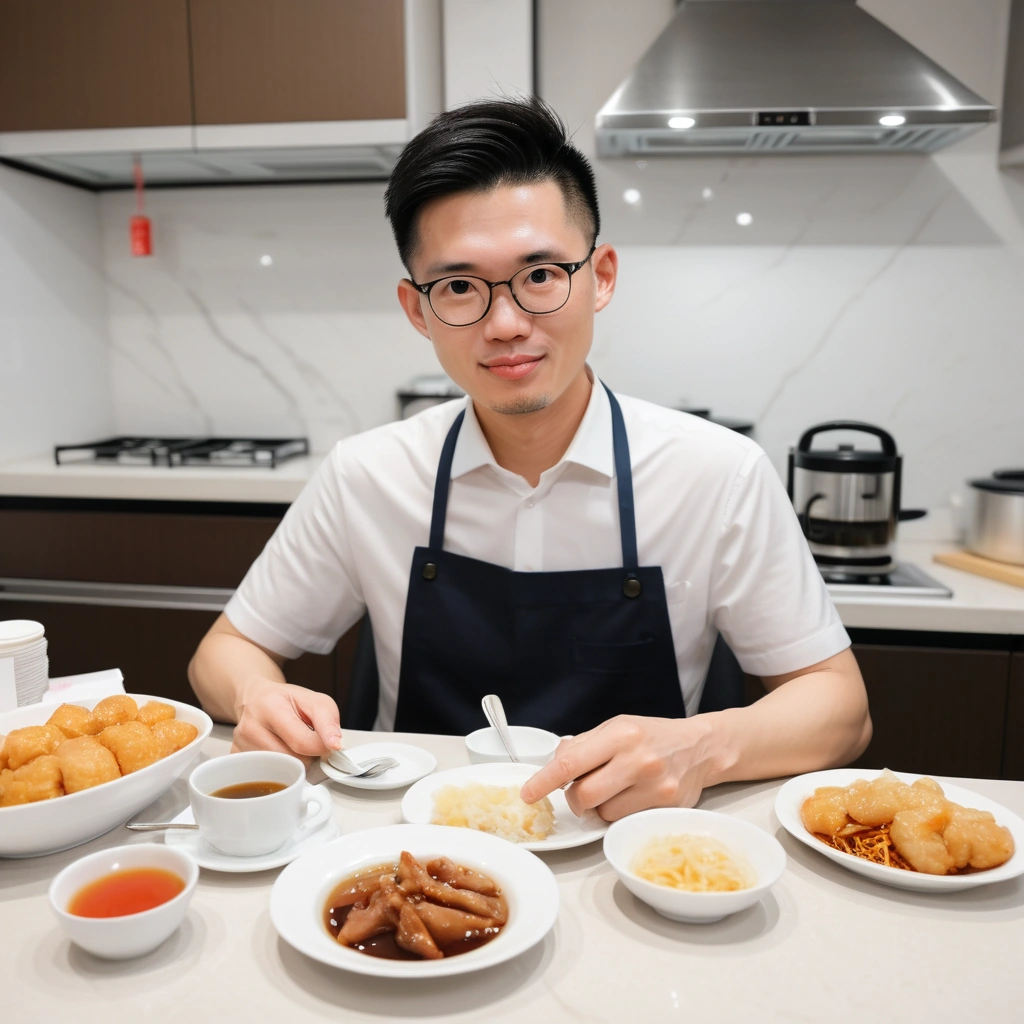Hong Kong Helper Food Allowance: Should I Take HK$1,236 or Let Employer Provide Food? (2025 Complete Guide)
The Direct Answer: The 2025 food allowance is HK$1,236 per month (increased from HK$1,196 in 2024), but 73% of helpers who take it report struggling to eat properly on this amount. Food in Hong Kong realistically costs HK$2,500-3,500 monthly for basic meals. Take the allowance ONLY if: you have access to cheap wet markets, can cook and store food, enjoy cooking your own cultural food, or your employer provides terrible/insufficient food. Otherwise, employer-provided food saves you HK$1,500-2,000 monthly that you can remit home. The choice isn’t just about money – it’s about survival math in Asia’s most expensive city.
The Real Cost of Eating in Hong Kong (2025 Prices)
Basic grocery prices will shock you: One meal at cheapest cha chaan teng costs HK$45-65. Instant noodles are HK$5-8 per pack. Rice (5kg) costs HK$45-80. Cooking oil (1L) is HK$25-40. Eggs (12 pieces) cost HK$25-35. Chicken (whole) is HK$45-70. Fresh vegetables for one week cost HK$60-100. Pork (500g) costs HK$40-60. The absolute minimum for survival eating is HK$70-90 daily, totaling HK$2,100-2,700 monthly.
Budget breakdown for basic eating: Breakfast (bread/eggs/coffee): HK$15-20. Lunch (rice box/simple meal): HK$35-45. Dinner (home-cooked or cheap takeout): HK$30-40. This totals HK$80-105 daily or HK$2,400-3,150 monthly. The HK$1,236 allowance covers only 39-51% of actual food costs. You’ll pay HK$1,200-1,900 from your salary for food, reducing remittance significantly.
Wet markets offer cheaper options but require early morning shopping (5-7 AM) when you’re likely working. Supermarkets like PX Mart or Wellcome have occasional discounts but still expensive. Even buying only on sale, monthly groceries cost HK$1,800 minimum. Street markets in Sham Shui Po or Yau Ma Tei are cheaper but far from most employer homes. Transport to cheap markets adds HK$100-200 monthly to food costs.
Filipino stores charge premium prices for comfort food: Spam costs HK$45. Corned beef is HK$38. Philippine mangoes are HK$120/kg. Lucky Me noodles cost HK$12. Magnolia ice cream is HK$65. Eating familiar food destroys budgets quickly. One “homesick shopping trip” can cost HK$300-500.
When Food Allowance Makes Sense (Limited Situations)
Take allowance if employer provides inadequate food: One meal daily when contract specifies three, only instant noodles or bread regularly, expired or spoiled food, or tiny portions leaving you hungry. Document poor food provision before requesting change to allowance. Labour Department supports switching to allowance for inadequate food. Better to struggle budgeting than slowly starve.
Take allowance for dietary restrictions: Halal requirements if employer won’t accommodate. Vegetarian/vegan in meat-heavy household. Severe allergies employer ignores. Medical conditions requiring special diet. Religious fasting periods like Ramadan. These justify allowance despite higher costs.
Take allowance if you have unusual arrangements: Living out (rare but happens). Working for elderly who don’t cook. Part-time or shared helper situations. Employer travels frequently leaving you alone. Family that eats out constantly. These scenarios make allowance practical.
Take allowance with cost-saving opportunities: Employer allows extensive food storage space. Access to employer’s garden for vegetables. Time and permission for wet market shopping. Sharing cooking with nearby helper friends. Employer supplements allowance informally. These factors make HK$1,236 viable.
When to Choose Employer-Provided Food (Most Cases)
Financial reality for most helpers: Employer food saves HK$1,500-2,000 monthly for remittance. That’s ₱10,000-13,500 extra sent home monthly. Over two years, saves HK$36,000-48,000 (₱240,000-320,000). This difference funds children’s college education. Most helpers choosing allowance regret it within three months.
Good employer food indicators: Family cooks daily meals at home. Employer asks about food preferences. Includes helper in grocery shopping. Allows refrigerator/pantry access. Provides variety beyond rice and vegetables. Respects cultural/religious dietary needs. These employers typically provide adequate food.
Hidden benefits of employer food: No grocery shopping time needed. No cooking after exhausting work. No food storage struggles in tiny rooms. No pressure when prices increase. Emergency food during illness. Social eating with family sometimes. These advantages outweigh allowance flexibility.
Quality employer food situations: Families with children eat nutritious meals. Health-conscious employers provide good variety. Chinese employers often share quality home cooking. Employers with helpers long-term understand food needs. Working mothers appreciate cooking help and share meals. These situations provide better nutrition than self-budgeting.
The Shopping Reality Check
Typical weekly shopping on HK$1,236 allowance (HK$309 weekly):
- Rice (2kg): HK$20
- Instant noodles (7 packs): HK$40
- Eggs (12): HK$30
- Chicken (1kg): HK$45
- Vegetables: HK$40
- Cooking oil: HK$25
- Bread: HK$20
- Milk: HK$25
- Fruit: HK$30
- Seasonings/sauce: HK$20 Total: HK$295 (leaves HK$14 for everything else)
This assumes cooking every meal, no eating out, no coffee shops, no snacks, no Filipino food, and no social meals with friends. It’s survival, not living. One McDonald’s meal (HK$45) breaks the weekly budget. Getting sick and needing comfort food destroys the month’s planning.
Time cost nobody mentions: Shopping takes 3-4 hours weekly with travel. Cooking three meals takes 2 hours daily. Washing dishes and cleaning takes 1 hour. Total: 20+ hours weekly for food management. After working 14-16 hour days, this exhausts helpers. Many resort to unhealthy instant noodles from exhaustion.
How to Negotiate Food Arrangements
If requesting change to allowance: Document current food problems with photos and diary. Request meeting with employer about “food arrangements.” Explain specific issues professionally: “I appreciate your provision, but I have dietary needs…” Propose trial period of 3 months for allowance. Accept if employer offers partial solution (some meals provided, partial allowance).
If employer insists on allowance: Negotiate for higher amount citing 2025 costs: “HK$1,236 is government minimum, but actual costs are HK$2,500.” Request HK$1,800-2,000 for realistic eating. Ask for periodic review as prices increase. Secure refrigerator and storage space. Get cooking privileges in writing.
Mixed arrangements (best compromise): Employer provides dinner (biggest meal), you handle breakfast/lunch. Employer provides weekday meals, you handle weekends. Employer provides groceries, you cook for yourself. Employer provides rice/basics, you buy proteins/vegetables. These arrangements can work well.
Contract documentation crucial: Specify exact arrangement in employment contract. Include amount if taking allowance (not just “food allowance”). Clarify if includes all meals or specific ones. Document any supplementary agreements. Keep receipts if employer questions spending.
Real Stories from Hong Kong Helpers
Jennifer took HK$1,196 allowance in 2023: “I thought I was smart getting ‘extra money.’ After three months, I was eating instant noodles twice daily. Lost 8kg. Spent HK$600 monthly from salary on food. Finally asked employer to provide food instead. Now I save HK$1,500 more monthly.”
Maria negotiated mixed arrangement: “Employer provides dinner and weekend meals. I get HK$600 for breakfast and lunch. Works perfectly – I eat sandwiches for breakfast, cheap lunch box. Save HK$800 monthly compared to full allowance. Employer happy, I’m happy.”
Rose stuck with bad employer food: “Employer gives small portions, but it’s still better than allowance. I supplement with HK$300 monthly for snacks and fruits. Still save more than friends on allowance who spend HK$2,000+ on food.”
Ana lives with generous employer: “My employer includes me in all meals, even restaurants sometimes. Asks what Filipino food I miss and buys ingredients. I save entire salary except personal items. Friends on allowance struggle constantly with food budget.”
Food Allowance Tax and MPF Facts
Important: Food allowance is NOT additional salary. It’s either food OR allowance, not both. Allowance is tax-exempt (not counted as income). Not included in MPF calculations. Not counted for severance/long service payment. Not increased with salary increments necessarily. Cannot be reduced once given (Labour Department rule).
Legal protections: Employer must pay on time with salary. Cannot withhold for any reason. Must continue during paid sick leave. Must pay during annual leave. Must pay during statutory holidays. Switching from allowance to food requires mutual agreement.
Survival Strategies If You Take Allowance
Week 1-2 monthly: Buy bulk at wet markets: Rice (10kg) lasts whole month: HK$75. Frozen chicken (2kg) when on sale: HK$70. Potatoes/onions in bulk: HK$40. Oil (2L) monthly supply: HK$45. Eggs (30 pieces) when cheap: HK$55.
Week 3-4: Stretch with cheap proteins: Tofu: HK$5-8 per block. Lentils provide protein cheaply. Canned fish when discounted. Eggs as main protein source. Vegetable markets after 6 PM for discounts.
Daily tactics: Cook large batches on Sundays. Pack lunch to avoid buying. Drink water, not beverages. Join helper food sharing groups. Use Park N Shop app for discounts. Shop at street markets in Mong Kok.
Emergency food backup: Keep emergency instant noodle supply. Build network for meal sharing. Know which temples offer free meals. Save HK$100 monthly for sick days. Some churches provide food assistance.
The 2025 Decision Framework
Take food allowance only if:
- Employer food is genuinely inadequate (document this)
- You have special dietary needs employer won’t meet
- You have time and energy for food management
- You can genuinely survive on HK$1,236 (rare)
- Employer offers above minimum amount
Choose employer food if:
- Employer has history of adequate provision
- You want to maximize remittance
- You lack time/energy for cooking
- You’re new to Hong Kong
- Employer seems reasonable about food
Red flags either way:
- Employer pushing hard for allowance (might be stingy)
- Employer refusing allowance option (might be controlling)
- Previous helper warnings about food
- Employer mentioning “helpers don’t eat much”
- No clear food arrangement discussion
The Bottom Line
The HK$1,236 food allowance sounds like extra money but becomes a financial trap in expensive Hong Kong. Unless your employer provides terrible food or you have special circumstances, employer-provided food saves you HK$1,500-2,000 monthly. That’s ₱10,000-13,500 more for your family every month.
Don’t let pride cost you money – eating employer’s food isn’t shameful if it’s adequate. Your goal is maximizing remittance, not food independence. The allowance only works if you’re exceptional at budgeting and willing to sacrifice eating quality. Most helpers taking allowance switch back within six months.
Make decisions based on math, not emotion. HK$1,236 cannot provide proper nutrition in Hong Kong – this is mathematical fact, not opinion. Choose arrangements that let you stay healthy while saving money. Your family needs your remittance more than you need food choice freedom. Be practical, not proud, about food arrangements.


